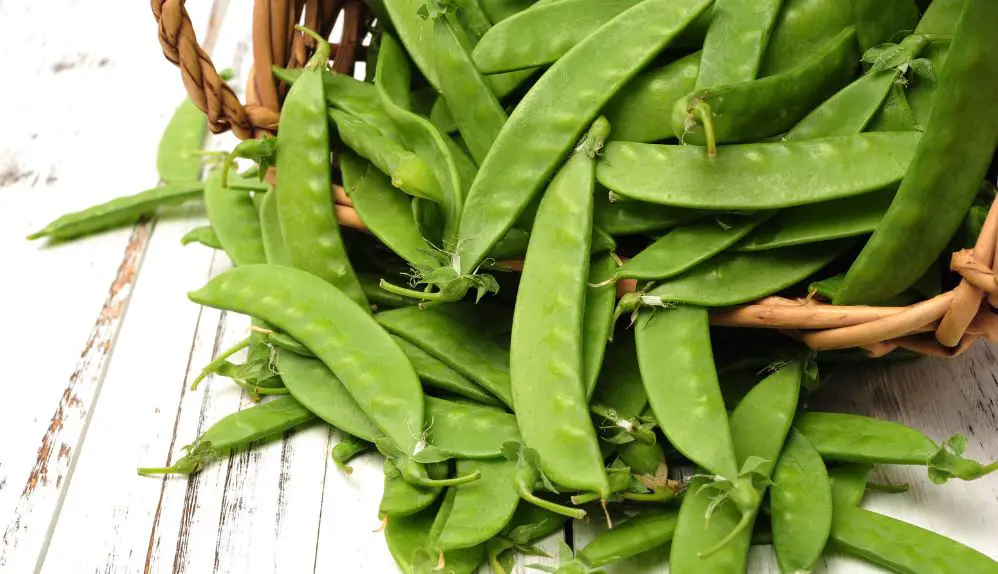How similar are snow peas and snap peas? These two kinds of peas are quite different from one another, even though they both contain edible pods and have similar-sounding names. Gardeners may produce the desired kind and harvest these peas at the proper period of growth by being aware of the difference.

Snow Peas vs. Snap Peas
Peas belong to the family of legumes. The three varieties are English, SnapSnap, and snow peas. Peas have two different ways of growing. Climbing cultivars are easy to cultivate on a trellis and have vines that reach 6 to 8 feet (1.8-2.4 m). Bush-type peas may only grow to a height of 2 to 3 feet (.6-.9 meters), but many gardeners support the plants to keep them from falling.
Harvest time for English peas, or garden or shelling peas, occurs when the seeds are big, solid, and rounded. This particular kind of peas has a stiff membrane lining its pods, rendering them inedible. Ideally, the peas are taken out of the pod before their natural sugars convert to starch.
As they do not have this membrane, the pods of snow peas or snap peas may be eaten. The resemblance between snap and snow peas ceases at this point. Snow peas, also known as Chinese pea pods, are plucked while young. The peas within the flat pods are quite small.
Snap peas feature spherical pods with an abundantly fleshy exterior and developing seeds. Because of the sweet taste of the pod, this variety is also known as sugar snap peas. Although the edges of all three peas may contain fibrous strings, certain snap pea varieties have been engineered to be stingless.
Differences in the genetic structure of snow peas and SnapSnap peas
It is simple to believe that snow or snap peas are just English peas picked while still young. According to science, sugar snap peas (Pisum sativum var. macrocarpon), snow peas (Pisum sativum var. saccharatum), and English peas (Pisum sativum var. sativum) are related but genetically distinct kinds.
English peas also have a history in Eurasia, where they have been grown since around 7000 BCE. Southwest Asia originated snow peas, initially cultivated in the 16th century.
To create a better variety of English peas, snow peas and English peas were crossed in 1952. Instead, a new variety of peas containing advantageous traits from both parents was produced. The resulting snap peas produced tasty, shellable peas and soft, edible pods.
Snow pea vs. Sugar snap pea Harvesting
Snow peas are picked when the pods are the right size and before the seeds ripen. It is advisable to examine the seed packaging since some cultivars will grow to 5 inches (13 cm) before reaching the seed development stage. Other cultivars should be harvested at 3 to 4 inches (8-10 cm).
From the moment the peas within the pod start to round out until they are almost full size, sugar snap peas may be picked. Both snap and snow pea pods will turn fibrous and harsh if left on the vine too long. Snap pea seeds may be collected and shelled like English peas when fully developed.
When harvested often, all kinds of peas blossom and produce more fresh pea pods. Snow or snap pea seeds must be given enough time to mature to be saved for the garden the following year. Unlike English peas, unlike peas, SnapSnap and snow pea pods will not break apart when drying on the vine.
Snap and Snow pea Varieties
There are wide varieties of snow and snap peas available to gardeners. Available in bush or climbing forms, both sorts of peas. Some have appealing flower or pod colors, while others provide disease protection.
Snap pea varieties
- Sugar Ann
- Sugar Daddy
- Sugar Magnolia
- Super Sugar Snap
- Amish Snap
- Cascadia
- Tendersweet
Snow pea varieties
- Mammoth Melting
- Oregon Sugar Pod
- Snow Max
- Snow Royal
- Oregon Giant
- Avalanche
- Golden Sweet
- Little Snowpea Purple


